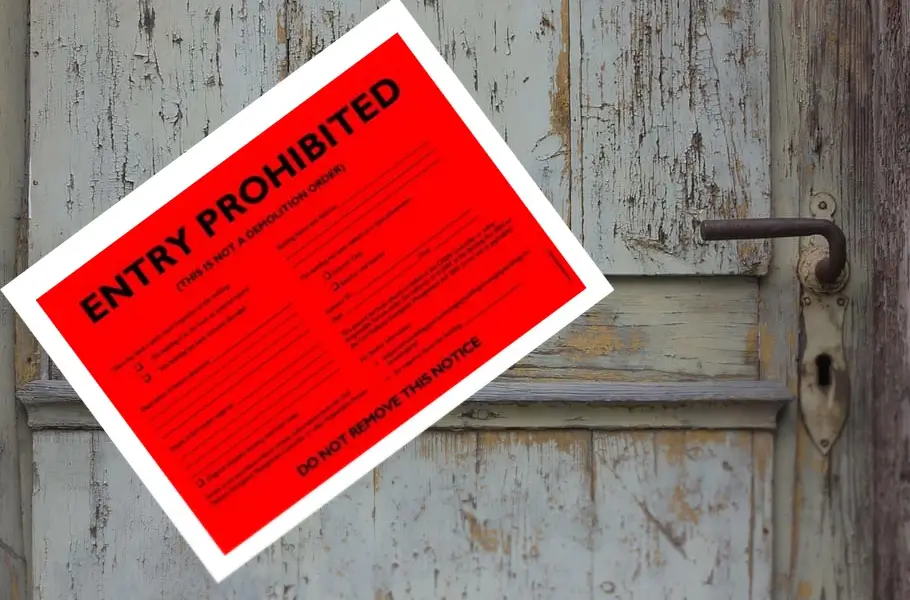Background
New Zealand has been struck by unprecedented weather events this year. In January Auckland suffered widespread flooding during Auckland Anniversary Weekend, and in February Cyclone Gabrielle wreaked havoc across the North Island with the Hawkes Bay region particularly badly affected.
During those flooding events, badly affected buildings were assessed by local authorities. Depending on the extent of the damage, a building could be subject to one of three colour-coded placards (or “stickers”), placing legal restrictions on access to the buildings. In increasing order of severity, the stickers are:
White – No Access Restrictions
A white sticker indicates that the building suffered only light damage or no damage, and may continue to be used. The white sticker does not necessarily mean that the building is safe, however, as there may be unobserved damage to the building. It would be prudent for owners of white-stickered buildings to have the building checked by builders or engineers for peace of mind.
White stickers expire 21 days after they are issued and may be removed by the owners.
Yellow – Access Prohibited
A yellow sticker indicates that the building has suffered some damage and that access to the building is restricted. This typically means that there some parts of the building have suffered moderate damage and have been identified as posing a significant hazard, and the public may not access the building except under supervision for a limited time on essential business, such as removing critical business records, valuables, or property.
Red – Access Prohibited
A red stickered building has suffered moderate to heavy damage and poses a significant safety hazard. It does not necessarily mean that the building will be demolished, but entry into the building is prohibited.
The Government’s Buyout Scheme
On 1 June 2023, Cyclone Recovery Minister Grant Robertson announced that the Government will enter into a voluntary buyout scheme with the owners of properties that were rendered unliveable as a result of the flooding events of earlier this year.
The Government will, in consultation with local authorities, set three categories for affected properties, with Category 1 areas being those which are still safe to live in without the need for flood damage mitigation measures; Category 2 areas being those where flood damage mitigation measures could be carried out; and Category 3 areas being those where flood damage mitigation was not possible. The Government would enter into a voluntary buyout scheme with the owners of Category 3 properties.
Category 2 properties will be further subdivided into three subcategories:
2A — a ‘placeholder’ subcategory for areas where there is insufficient initial information to determine the category; these areas may subsequently be moved to another category entirely;
2C — where community level interventions are sufficient to mitigate future flood damage risk; and
2P – where property level interventions are needed to mitigate future flood damage risk, possible together with community level interventions.
The type of sticker buildings received in the aftermath of the floods was not to be taken as an indication of what category the homes would fall under in the buyout scheme.
The number of properties that would fall into category 3 is estimated to be around 700, with around 400 in Auckland.
It is important to note that there will not be a direct one-to-one correlation between red-stickered, yellow-stickered, and white-stickered properties, and categories 1, 2, and 3. For example, it is possible that a red-stickered house will not fall into Category 3 if the area is considered safe to live in. Similarly, a yellow or white-stickered house may fall into category 3 if flood damage mitigation cannot be carried out on the property.
The details of the plan, the Minister advised, would be worked out over the coming days, and a funding arrangement would need to be put into place with local authorities to fund the buyout of Category 3 properties. An initial risk category guide was provided by the government as follows:
| Category | Definition | Examples |
| 1 | Repair to previous state is all that is required to manage future severe weather event risk. | Minor flood damage to repair but no need for significant redesign/retrofitting. |
| 2A | Potential to fall within 2C/2P but significant further assessment required. | Interventions may be required / possible but insufficient information to provide initial categorisation (these may subsequently move between “2” categories or to categories 1 / 3). |
| 2C | Community level interventions are effective in managing future severe weather event risk. | Local government repairs and enhances flood protection schemes to adequately manage the risk of future flooding events in the face of climate change effects. |
| 2P | Property level interventions are needed to manage future severe weather event risk, including in tandem with community level interventions. | Property-specific measures are necessary e.g., improved drainage, raising houses is necessary. Benefits accrue to property owners but some may face affordability issues. |
| 3 | Future severe weather event risk cannot be sufficiently mitigated. In some cases some current land uses may remain acceptable, while for others there is an intolerable risk of injury or death. | In the face of enhanced climate risks the property may face unacceptable risk of future flooding. Other property could be subject to unstable land that poses an ongoing risk. |
If You Have a Property in Category 3, What are Your Rights?
While there is still much to be decided about the process, there are a few important factors to consider.
The first is that maps published by various local Councils on 1 June 2023 were provisional only. While they may be useful as a guide or indication as to the likely categorisation of a flood-damaged property, they are not yet set in stone. In fact, the public has been cautioned that the maps “may be reviewed and altered at any time, without notice.”
The second is that, once the categorisations have been finalised, the process is intended to be voluntary. As opposed to, say, a compulsory acquisition of land pursuant to the Public Works Act, the government intends for affected homeowners to engage with them in the process. You will not be forced to sell your property. By the same token, you will not be able to compel the government to buy your property from you.
The third is that, if you have claimed money from any insurance policy, it would be prudent to preserve those funds so that they can be employed in whatever is the most appropriate way for you, particularly if the flood-damaged house is your main home. In such circumstances, it will be important to preserve your ability to purchase a new house.
Come Talk to Us
Whatever your position, we will be happy to sit down with you for an obligation-free meeting to discuss your situation and your possible options moving forward.
Contact Details
DDI: 09 837 5738
Mobile: 021 115 7844

